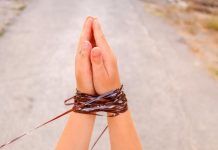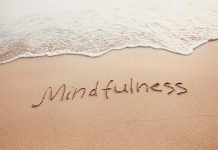Too often people separate their spiritual practices from their everyday lives. They may set aside time to meditate when they are searching to find stillness within, but then the rest of their day is filled with anxiety and imbalance. It is said that if you are on the spiritual path, then everything you do is part of that path.
In many traditions, spirituality comes with setting foundations and then building upon that. There is no abiding in all equanimity if the monkey mind is not settled. In this article, we’ll take an overview of Tibetan Buddhism where there are four levels of spiritual practice. But in yoga too, we see this progression in Patanjali’s Yoga Sutras (see https://celebrateyoga.org/what-is-patanjali-yoga/)
In Tibetan Buddhism, first comes Hinayana. This encompasses mindfulness and ethical living. This is the foundation of the house. If the mind cannot be established in the presence, and in Truth, there really is no starting point to be a seeker. This is the first step in setting the ego aside, think of it as the trailhead.
Next comes Mahayana. This encompasses loving-kindness and devotional practices. One really needs to be singularly on track without compromise on these. These are the walls of the house. Here we go further to set aside one’s own desires in favor of serving others. The secret to living is that ultimately what we do to others, we do to ourselves.
Then comes Vajrayana. This encompasses purifying the chakras, clearing out of the unconscious mind, and begins the first prolonged states of bliss. This is the roof of the house. In previous steps we dealt with the mind, and our psychology. Now we work on the energy body.
Finally comes Dzogchen. This encompasses effortless states of bliss and spontaneous consolidation as the deity. This is the effortless state of the first three. It’s important to note that this state still has an ego in play which can hijack the bliss and claim enlightenment, feeling superior to others. Actually, this is where many spiritual teachers get hung up and get into trouble. True Dzogchen is to totally melt into the deity where no self remains and one fully embodies the divine. The bliss state often manifests in a dominant chakra and one can be tempted to simply sit with that but it’s important to know that the other chakras are still active and need to still be purified. This is why an otherwise awake person may still exhibit questionable karmic conditioning and behavior.
As we can see, the practice begins with intentionality and eventually dissolves into spontaneity. But even then, it flows with existence, never settling. Change is the only constant.
47 Most Famous Motivational Quotes of All-Time
49 Greatest Love Quotes
37 Inspirational Quotes that Will Change Your Life






























